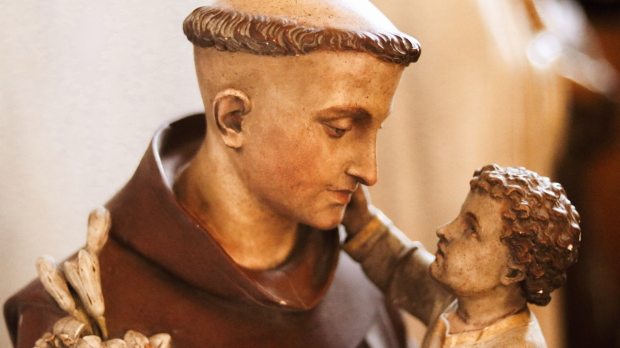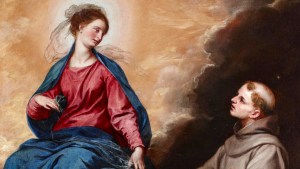We know him as St. Anthony of Padua, but this title would have confused his parents if they had heard it when he was a child. In fact, his baptismal name was Fernando de Bulhões e Taveira de Azevedo. He only changed his name to Anthony (Antonio) at the age of 25, when he became a Franciscan friar.
Why “of Padua?”
Venerated as one of the most popular saints in the world, he is known almost worldwide as St. Anthony of Padua. The “almost” is on account of Portugal, which, with good reason, calls him St. Anthony of Lisbon. Indeed, it so happens that St. Anthony was actually Portuguese, and born in Lisbon in 1195.
However, he ended up being better known as St. Anthony of Padua, which is how the Italians (and the rest of us) refer to him. After all, the saint lived most of his life and carried out much of his mission in Padua, the Italian city where he became immensely loved and famous. The city’s beautiful and grandiose basilica, which is one of the most important churches in Italy and one of the most popular in the world, is dedicated to St. Anthony.
At the age of 15, the young Anthony —or rather, still Fernando — entered the order of St. Augustine, but 10 years later he joined the Friars Minor of St. Francis of Assisi. The change was due to his desire to preach the Gospel to the Saracen Muslims. He even went to Morocco, but was forced to return to Europe because of a serious illness.
Miracle worker
His fame for performing miracles endures through the centuries. Among his many prodigious deeds is the famous miracle of the “severed foot.” In Padua, during a fit of rage, a young man named Leonardo kicked his own mother and, repentant, went to confession to St. Anthony. To illustrate the gravity of that sin, the holy confessor told him, “The foot of one who kicks his own mother deserves to be cut off.” Leonardo took the phrase literally and cut off his own foot. When he learned of the fact, St. Anthony miraculously made the foot reconnect to the young man’s body. There are many more miracles attributed to him, such as the mule that knelt before the Eucharist.
He is also known for obtaining miracles through his intercession after his death. There are a variety of prayers commonly used, such as this one or this one or this novena, which we’ve shared in other articles on Aleteia.
Pope Gregory IX canonized St. Anthony of Padua and Lisbon less than a year after his death, on Pentecost, 1232, which fell on May 30. His feast day is June 13.



